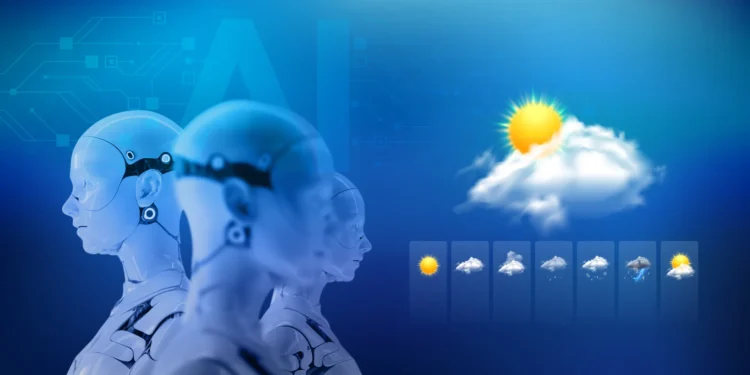In a groundbreaking development that promises to transform the landscape of meteorology, researchers have introduced a new AI-based method for weather prediction that outstrips traditional models in speed, accuracy, and efficiency. Dubbed ‘Aardvark Weather,’ this innovative approach harnesses the power of artificial intelligence to deliver forecasts that are not only faster but also require significantly less computing power than current systems.

The Power of AI in Predicting Weather
Traditionally, weather forecasts have depended on complex and time-consuming processes executed on bespoke supercomputers. These systems demand extensive manpower and immense computational resources. However, Aardvark Weather marks a departure from this norm by employing AI to analyze raw data from diverse sources such as weather stations, satellites, and balloons, streamlining the entire forecasting process.
Richard Turner, a professor of machine learning at the University of Cambridge, highlighted the efficiency and adaptability of this new method. “A single researcher with a desktop computer can now deliver accurate weather forecasts, revolutionizing how we approach this task,” said Turner. This AI method is not just a technical improvement—it is set to provide custom forecasts for specific industries or regions, drastically improving the utility of weather predictions.
Tailored Forecasts for Diverse Needs
One of the standout features of Aardvark Weather is its ability to quickly generate bespoke forecasts. “Whether it’s predicting temperatures crucial for African agriculture or assessing wind speeds for European renewable energy markets, this AI-driven method offers vast potential,” Turner explained. This capability contrasts sharply with the cumbersome, years-long development required by traditional systems to tailor forecasts to specific needs.

Democratizing Weather Forecasting
Beyond speed and customization, Aardvark Weather aims to democratize weather forecasting. By making powerful forecasting technologies accessible, it could significantly benefit developing countries and support global policymakers, emergency planners, and industries dependent on accurate weather data. Dr. Scott Hosking, director of science and innovation at the Alan Turing Institute, emphasized this point, stating that the breakthrough “could democratize forecasting by making it accessible to nations worldwide, aiding in critical decision-making and planning.”
Future Prospects and Global Impact
Dr. Anna Allen, the lead author of the research from the University of Cambridge, noted that this innovation could improve predictions for natural disasters like hurricanes and wildfires and address climatic issues such as air quality and ocean dynamics. “The implications of more accurate and rapid weather predictions are profound, extending beyond mere convenience to significantly impacting disaster readiness and response,” Allen remarked.
Moreover, Aardvark builds on recent advancements demonstrated by tech giants like Huawei, Google, and Microsoft. These companies have shown that AI can replace specific steps in the weather prediction process, such as the numerical solver, enhancing the overall speed and accuracy of forecasts.

As the world grapples with the increasing unpredictability of weather patterns due to climate change, innovations like Aardvark Weather offer a glimpse into the future of meteorology, where accuracy, speed, and efficiency are paramount. This AI-driven approach not only challenges the status quo of weather prediction but also sets a new standard that could reshape how we prepare for and respond to the weather worldwide.










